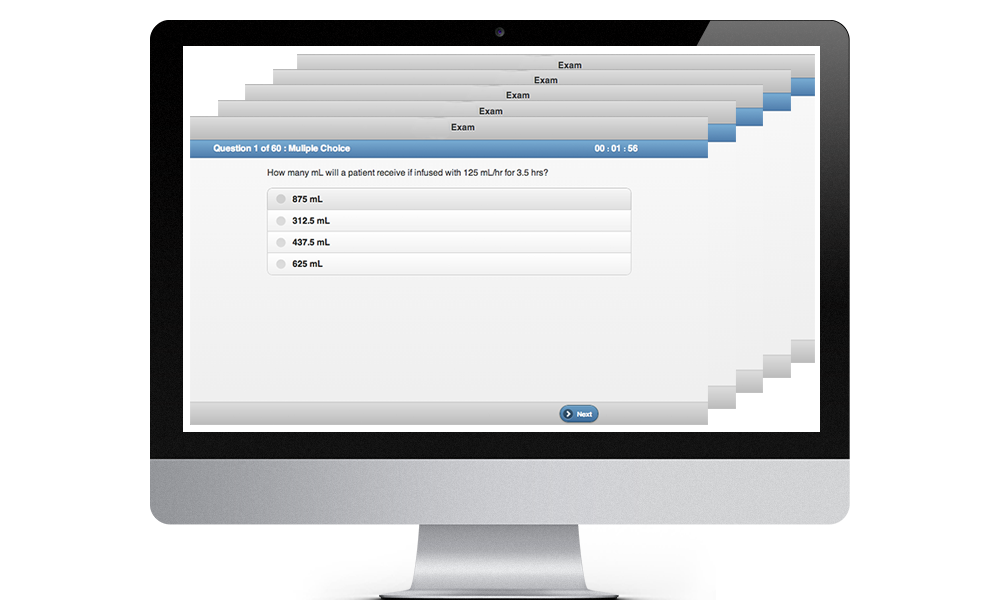EMT Basic Practice Test
Question 1 |
calling for an ALS backup. | |
calling the hospital. | |
calling your supervisor. | |
calling medical direction. |
Question 2 |
perform a rapid medical assessment. | |
gather a detailed history. | |
assess the baseline vitals. | |
perform a focused examination. |
Question 3 |
4 | |
5 | |
7 | |
6 |
Question 4 |
It delivers 100 percent oxygen during ventilation. | |
It can be used by one EMT to deliver ventilations to the patient. | |
It can be used in children and adults but is contraindicated for infants and newborns. | |
Oxygen flow ceases automatically after inspiration on spontaneously breathing adults. |
Question 5 |
Speaking slowly and directly to elderly patients. | |
Introducing yourself. | |
Asking that the radio and TV be turned down so you can better help them. | |
Position yourself so you are standing over the patient to let them know you are confident in the situation. |
Question 6 |
2months-up to a year. | |
1-3 days. | |
2-6 weeks. | |
1-2 weeks. |
Question 7 |
a tort. | |
battery. | |
assault. | |
minor consent. |
Question 8 |
Anaphylactic. | |
Obstructive. | |
Neurogenic. | |
Septic. |
Question 9 |
the patient is going into cardiac arrest. | |
the patient is in shock. | |
the patients pulse is a direct reflection of her agitation. | |
the patient has a possible head injury. |
Question 10 |
Abdominal muscle. | |
Cardiac muscle. | |
Voluntary Muscle. | |
Smooth muscle. |
|
List |
EMT Basic Practice Test
Sign up today for our EMT Basic Practice Test program and join the other Emergency Medical Technicians and Paramedics that passed their certification exam after using our system. Increase your chances of passing the first time to 98.5% with our proven program and our bank of 1000+ EMT Basic practice test questions. Our program includes:
- Unlimited practice tests with explanations, written by our content experts to mimic the material and test format you will see on the real EMT exam
- Focus quizzes to narrow in on knowledge areas
- Progress tracking and reporting tools
- 24/7 access from any computer or mobile device
We’re so confident in our program that we offer a 100% pass guarantee. Sign up today!






